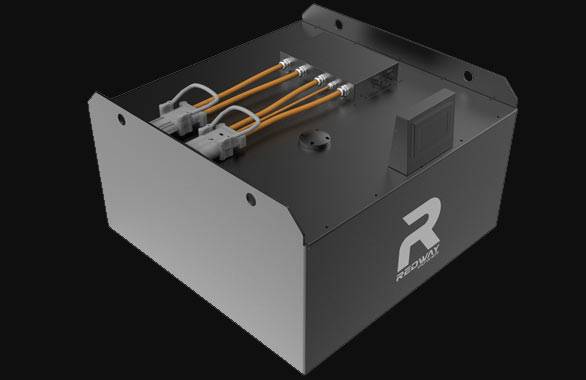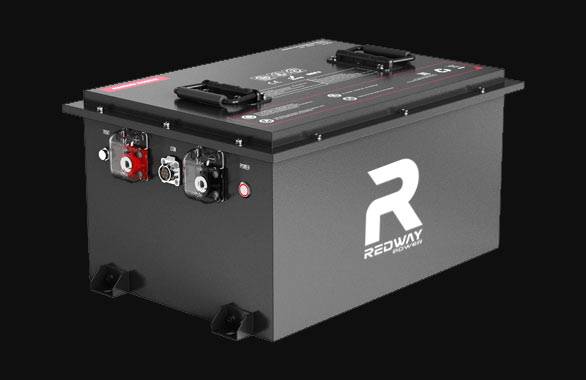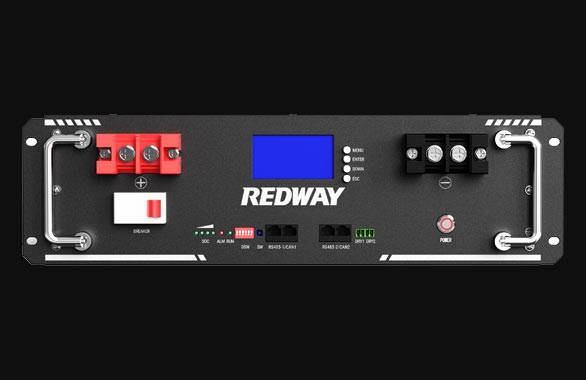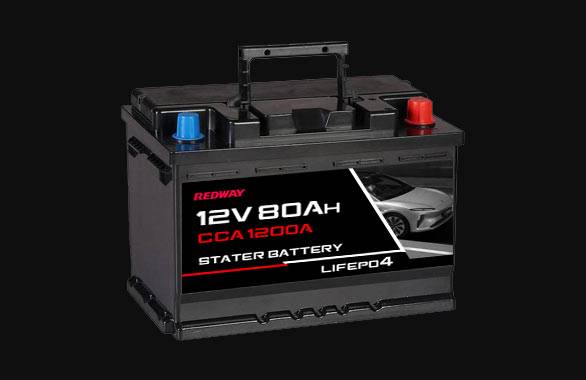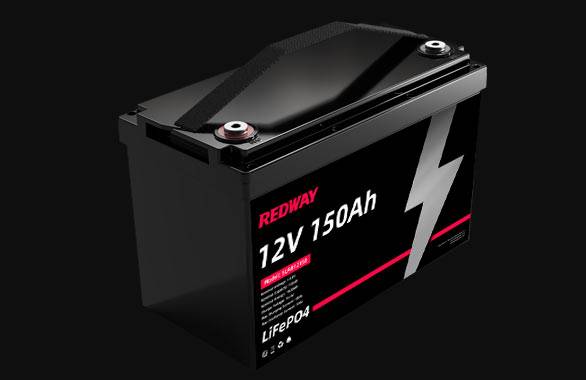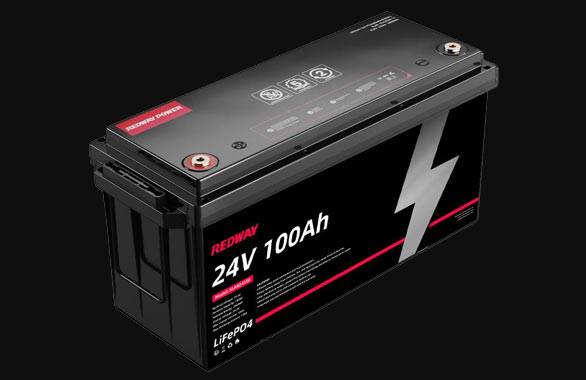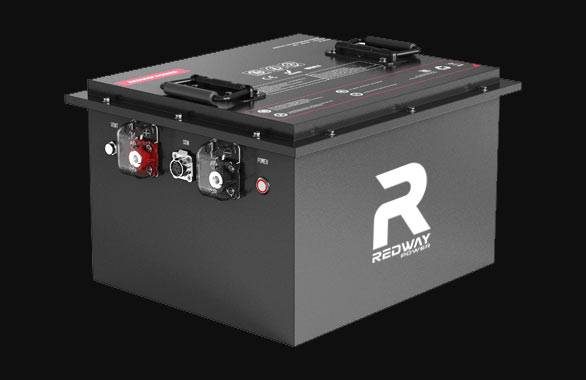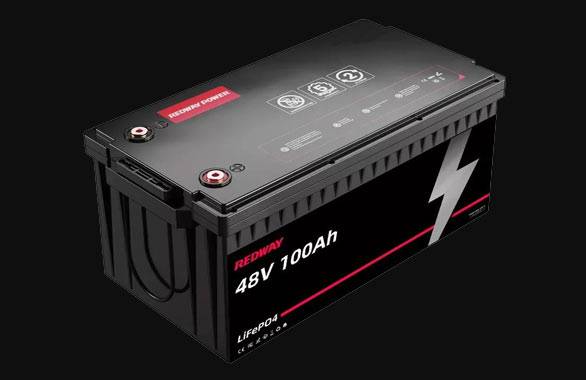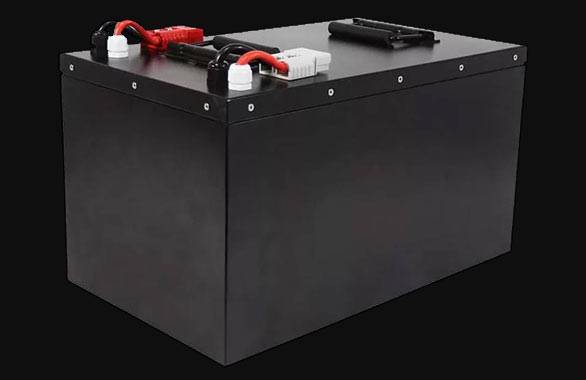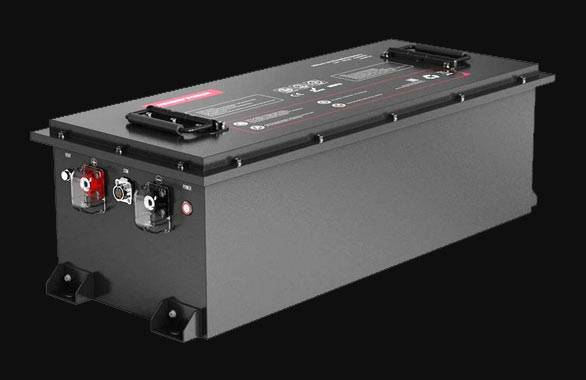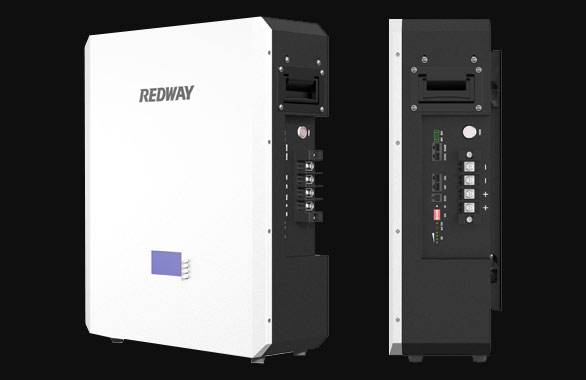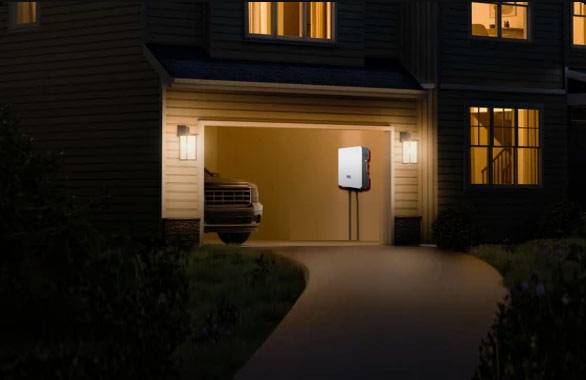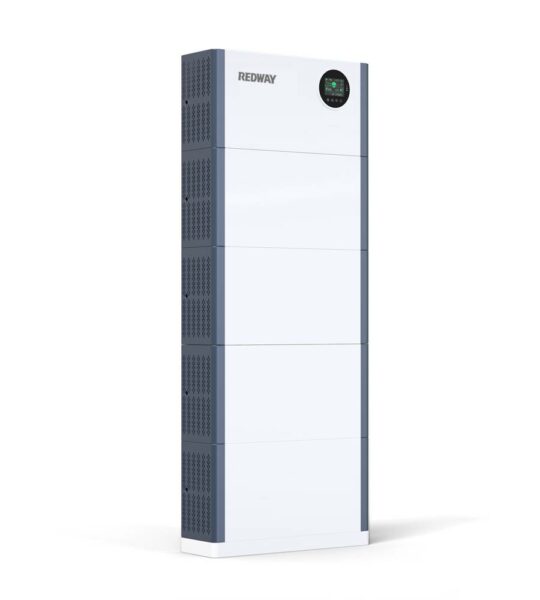- Forklift Lithium Battery
- Golf Cart Lithium Battery
- Rack-mounted Lithium Battery
51.2V 100Ah Rackmount LiFePO4 Battery
8000 times (80% DOD 0.5C)
Optional SNMP for TELECOM - Car Starter Battery
- 12V LiFePO4 Battery
12V 150Ah Lithium RV Battery
Bluetooth App | Self-heating
LiFePO4 | Group 31
UL 1642 | IEC 62619 - 24V LiFePO4 Battery
- 36V LiFePO4 Battery
- 48V LiFePO4 Battery
- 60V LiFePO4 Battery
60V 100Ah Lithium Battery (AGV, AMR, LGV)
Peak Discharge Current 400A
500 x 298 x 349 mm - 72V~96V LiFePO4 Battery
72V 100Ah Lithium Golf Cart Battery
Peak Discharge Current 315A (10S)
740 × 320 × 246 mm - Wall-mounted Lithium Battery
51.2V 100Ah 5kWh
Wall-mounted Battery532 x 425 x 170 mm / LiFePO4
>8000 Cycles (80% DOD 0.5C)
RS485 / CAN-bus
for Solar Home ESS - Home-ESS All-in-One
51.2V 32kWh
All-in-On HESS SystemPowerAll
51.2V / LiFePO4
>8000 Cycles (80% DOD 0.5C)
RS485 / CAN-bus / WiFi
All-in-One for Home ESS
Home Energy Storage System
Home ESS Lithium Battery OEM Manufacturer
0
Engineers
0
Technicians
0
Founding Year
0
Production base area ft²
Redway Power
Home ESS Factory Wholesale - The Ultimate Solution
Redway is a pioneer in energy storage with its Low Voltage Lithium Battery Module, boasting UL1973 certification and an impressive 6000 cycles (DOD 80%). Compatible with major ESS Inverter Brands, it's ideal for Rack ESS Systems. Explore our 12 years of expertise in wholesale Home ESS and Deep Cycle LiFePO4 Batteries. Click below for details.
Processes for advanced manufacturing
From raw materials selection to final assembly, Redway's lithium battery modules adhere to highly efficient processes, ensuring products meet high standards and stability.
A strict quality control system
The battery modules are rigorously tested and validated according to international standards to ensure safety, performance, and reliability.
Innovative Research and Development
Through continuous innovation and technological improvements, Redway strives to deliver advanced energy solutions to its customers.
Deep cycle, high quality, and safety
In addition to rigorous quality checks and safety protocols, Redway's ESS lithium battery module maintains consistent and reliable performance through numerous certifications.
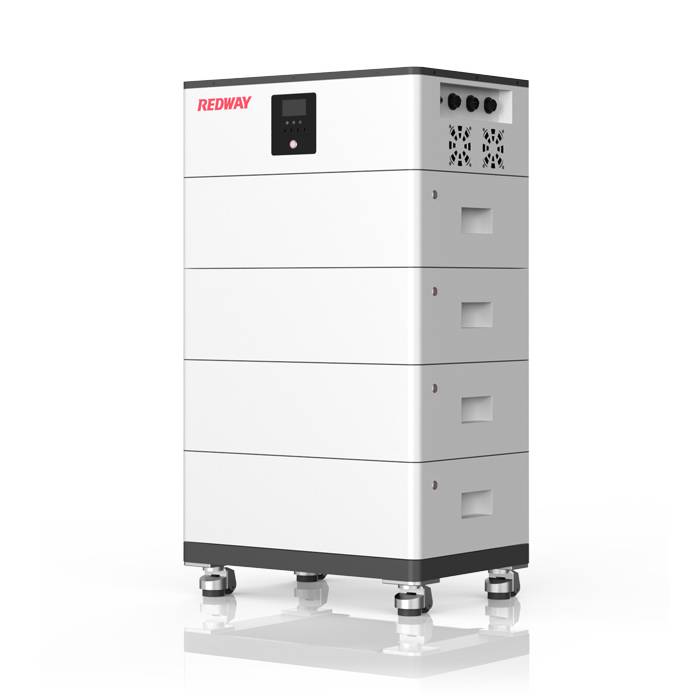
Redway Power Home ESS Products
Best Home ESS Manufacturer 2024

5kWh~30kWh All-in-One Home ESS with Inverter
Redway Power All-in-One PowerAll for Home-ESS Solutions, 5kWh, 10kWh, 15kWh, 20kWh, 25kWh, 30kWh. Click to know more.
5kWh~20kWh All-in-One Home ESS with Inverter
Redway Power All-in-One SmartOne-O for Home-ESS Solutions, 5kWh, 10kWh, 15kWh, 20kWh. Click to know more.
Redway Home ESS
Middle East Best Seller Home ESS LiFePO4 batteries, why so popular in 2023?
Middle East Best Sellers LiFePO4 batteries, why so popular in 2023? This innovative product ensures reliable power storage in the scorching desert landscapes. Click to know more.
Redway Home ESS
Redway Power Home ESS Rack Battery System, 51.2v 50/100ah and /48v and 50/100ah
The Rack Battery System from Redway consists of individual modules that all have an internal Battery Management System (BMS). Can be customized to 51v/48v 50/100ah. Click to know more.
Comprehensive Guide to Redway Home ESS Batteries
When selecting high-performance home energy storage solutions, it's essential to choose a trusted manufacturer that offers reliable, efficient, and long-lasting batteries. Redway Power provides advanced lithium Home Energy Storage System (ESS) batteries designed for exceptional energy efficiency, fast charging, and extended cycle life, ensuring uninterrupted power for residential use.
Why Upgrade to Lithium?
Redway Power’s LiFePO4 Home ESS batteries are a superior alternative to traditional lead-acid storage systems. They offer higher power output, lower maintenance, and environmentally friendly operation. With consistent energy storage, a lightweight design, and deep-cycle capabilities, they are ideal for solar and off-grid home energy solutions.
Compatible with Leading Home ESS Systems
Redway Power’s lithium batteries integrate seamlessly with various energy storage systems, including:
- Tesla Powerwall alternatives
- LG Chem RESU compatible systems
- SMA & SolarEdge hybrid inverters
- Schneider Electric energy storage solutions
- Growatt & Victron Energy off-grid systems
Key Benefits of Redway Power ESS Batteries
✔ Reliable performance for stable home power
✔ Fast charging to optimize solar and grid energy use
✔ Long cycle life, lasting years longer than lead-acid batteries
✔ Maintenance-free, eliminating water refilling and acid spills
✔ Eco-friendly, with zero emissions for a sustainable home energy solution
Upgrade your home energy system with Redway Home ESS Batteries for better efficiency, longer lifespan, and greater convenience. Contact us today!
What is ESS (Energy Storage System)?
An Energy Storage System (ESS) is a device or group of devices that store energy to supply electrical energy at a later time. ESSs are designed to manage power levels, meet peak demand, and integrate renewable energy sources effectively.

- Energy Storage: ESSs are designed to store electrical energy, allowing it to be used when needed.
- Power Management: ESSs play a crucial role in managing power levels and meeting peak demand, ensuring a reliable and stable power supply.
- Integration of Renewable Energy: ESSs contribute to the effective integration of renewable energy sources by storing excess energy and supplying it when renewable sources are unavailable or demand is high.
Energy Storage Systems (ESSs) are essential components that store energy for later use, enabling efficient power management and the integration of renewable energy sources. By storing and delivering electrical energy when needed, ESSs contribute to a more reliable and sustainable energy infrastructure.
What is Home ESS?
A Home ESS (Energy Storage System) is a device/system that stores electricity from power systems, such as solar panels, in a battery and discharges it when needed. It provides a reliable and sustainable energy solution for homes.

- Electricity Storage: A Home ESS stores electricity from power systems, such as solar panels, in a battery for later use.
- Discharge When Needed: The stored electricity in the battery is discharged when needed, providing a reliable and sustainable energy solution for homes.
A Home ESS, or Home Energy Storage System, enables the storage of electricity generated from power systems like solar panels. By storing and discharging electricity as needed, a Home ESS provides a reliable and sustainable energy solution for homes, contributing to energy efficiency and reducing reliance on the grid.
What does a HESS consist of?
A HESS (Energy Storage System) typically consists of energy storage units, inverters, a control system, and safety features. These components work together to store and manage electrical energy, ensuring reliable power supply and system safety.
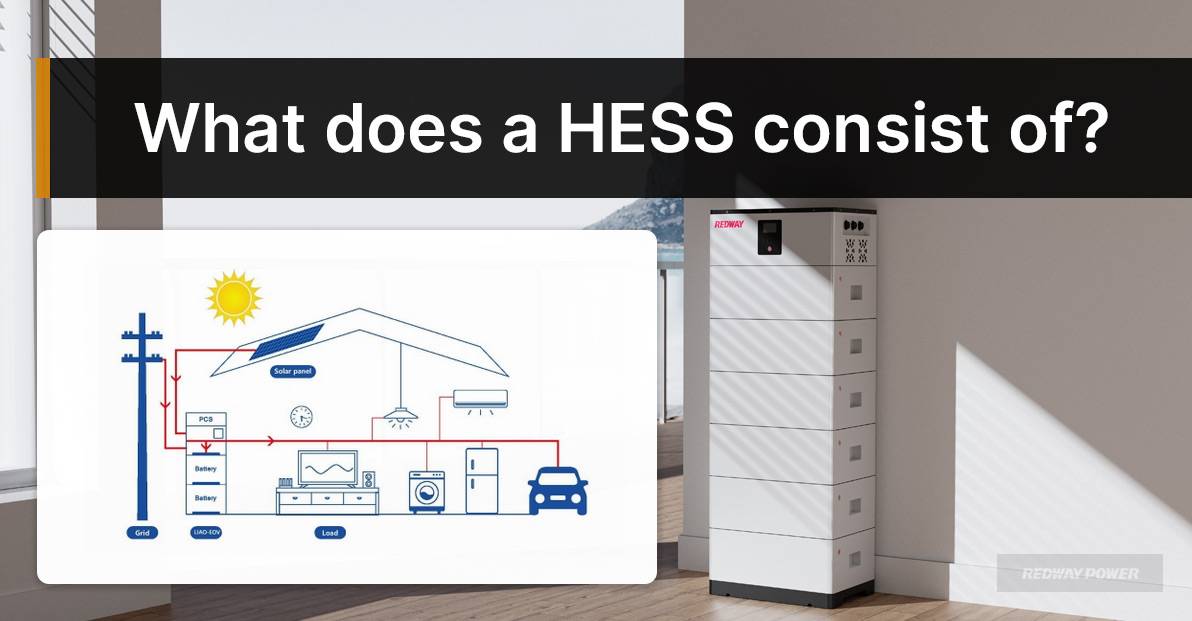
- Energy Storage Units: A HESS incorporates energy storage units, such as batteries, to store electrical energy for later use.
- Inverters: Inverters are essential components that convert the stored DC (direct current) power into AC (alternating current) power, making it compatible with electrical systems.
- Control System: A control system is employed to monitor and manage the energy flow within the HESS, ensuring efficient operation and optimal performance.
- Safety Features: HESS installations include safety features to protect the system and users, preventing potential hazards and ensuring safe operation.
A HESS (Energy Storage System) comprises energy storage units, inverters, a control system, and safety features. This combination of components allows for the storage, conversion, and management of electrical energy, ensuring reliable power supply and system safety.
ESS vs BESS: What’s the Difference?
The main difference between ESS (Energy Storage System) and BESS (Battery Energy Storage System) is that BESS systems use electrochemical batteries as a storage medium, while ESS is a more generic term that encompasses various storage mediums such as chemical, thermal, kinetic, or gravitational.
- ESS: ESS stands for Energy Storage System and is a broader term that encompasses various storage mediums such as chemical, thermal, kinetic, or gravitational.
- BESS: BESS, or Battery Energy Storage System, specifically refers to systems that utilize electrochemical batteries as the storage medium.
ESS and BESS differ in terms of the storage medium used. While ESS represents a more generic term covering various storage mediums, BESS specifically focuses on systems that rely on electrochemical batteries for energy storage. Understanding this distinction allows for a clearer understanding of energy storage systems and their specific applications.
What is the voltage of ESS?
The voltage of an ESS (Energy Storage System) can vary depending on the specific application and design. ESSs can operate at different voltage levels, ranging from low voltage (e.g., 12V or 24V) to higher voltages like 48V, 400V, or even higher, depending on the scale and purpose of the ESS.
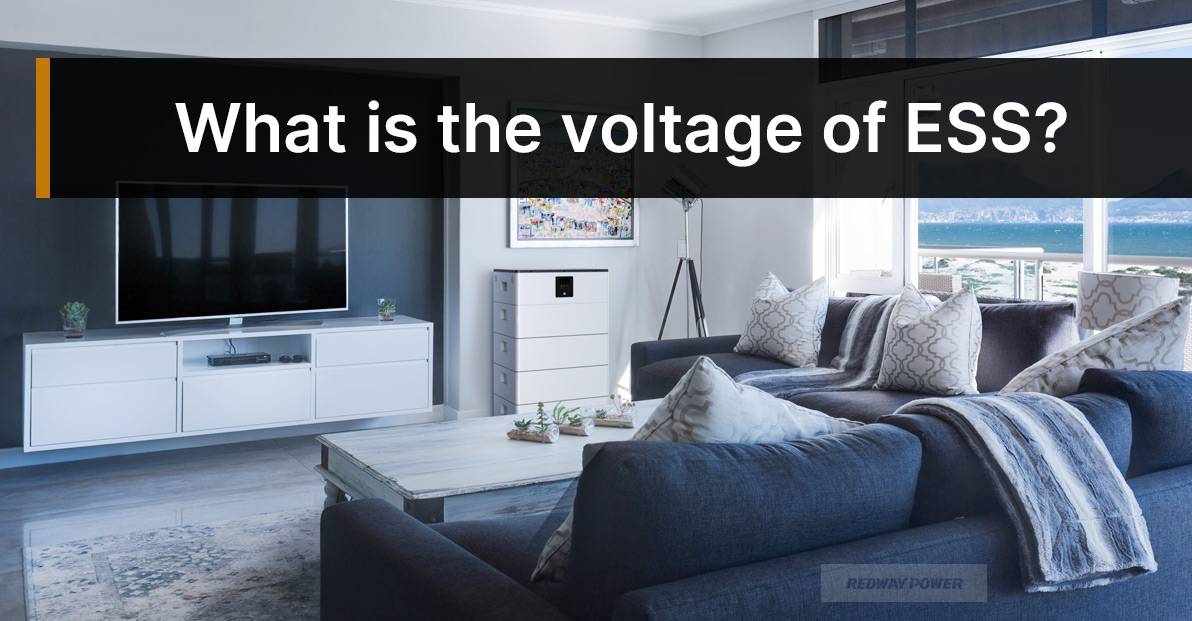
- Voltage Range: ESSs can operate at different voltage levels, ranging from low voltage (e.g., 12V or 24V) to higher voltages like 48V, 400V, or even higher.
- Application-Specific: The voltage level of an ESS is determined by the requirements and scale of the system it is integrated with.
The voltage of an ESS (Energy Storage System) can vary depending on its application and design. It can range from low voltage to higher voltages, depending on the specific requirements and scale of the system. Understanding the voltage range is essential for proper integration and utilization of ESSs in various applications.
Can I Run My House on Solar Power Only?
Yes, you can power a house entirely on solar power. With a modern solar energy system, including power storage, it is feasible to run a whole house completely on solar power.

- Feasibility: With a modern solar energy system, including power storage options, it is feasible to meet the energy needs of a house entirely through solar power.
- Factors to Consider: The feasibility of running a house on solar power alone depends on factors such as energy usage, available space for solar panels, and grid-tied options.
Yes, it is possible to power a house entirely on solar power. With a modern solar energy system and suitable considerations, homeowners can effectively meet their energy needs while benefiting from the sustainability and cost-saving advantages of solar power.
How Do Energy Storage Systems Revolutionize Power Management?
Energy Storage Systems (ESS) revolutionize power management by avoiding peak loads on the grid, reducing blackouts and emergencies. Discharging the stored energy allows ESS to offload the grid and provide uninterrupted power. ESS also assists power plants and grids in quickly restoring power after outages, enhancing the resilience and reliability of power management.
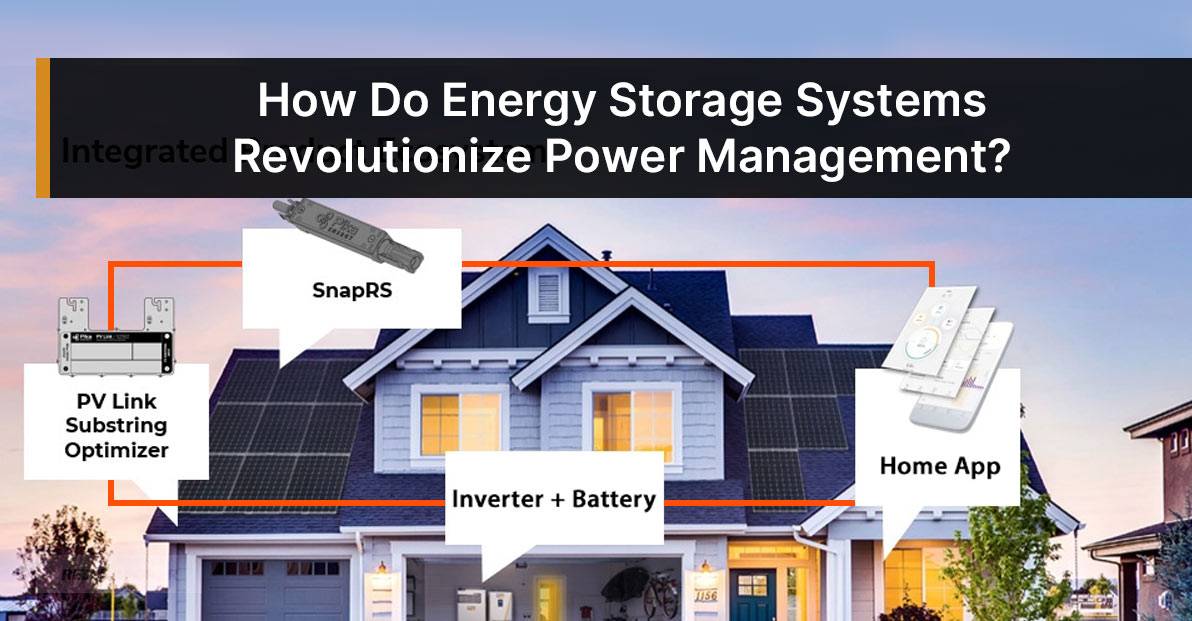
- Peak Load Avoidance: ESS helps avoid peak loads on the grid, reducing the risk of blackouts and emergencies.
- Uninterrupted Power: Discharging the stored energy allows ESS to provide continuous power without interruption, ensuring a reliable energy supply.
- Power Restoration: ESS assists power plants and grids in quickly restoring power after outages, contributing to a more resilient and reliable power management system.
Energy Storage Systems (ESS) revolutionize power management by avoiding peak loads, providing uninterrupted power, and assisting in power restoration after outages. By incorporating ESS into the energy infrastructure, power management becomes more resilient, reliable, and better equipped to handle peak demands and emergency situations.
What Is a Battery Energy Storage System and Its Role in Sustainable Energy?
A Battery Energy Storage System (BESS) is a device that enables energy from renewable sources, like solar and wind, to be stored and released when the power is needed most. Its role in sustainable energy is crucial as it allows for the efficient utilization of renewable energy, reducing reliance on fossil fuels and contributing to a more sustainable and environmentally-friendly energy system.
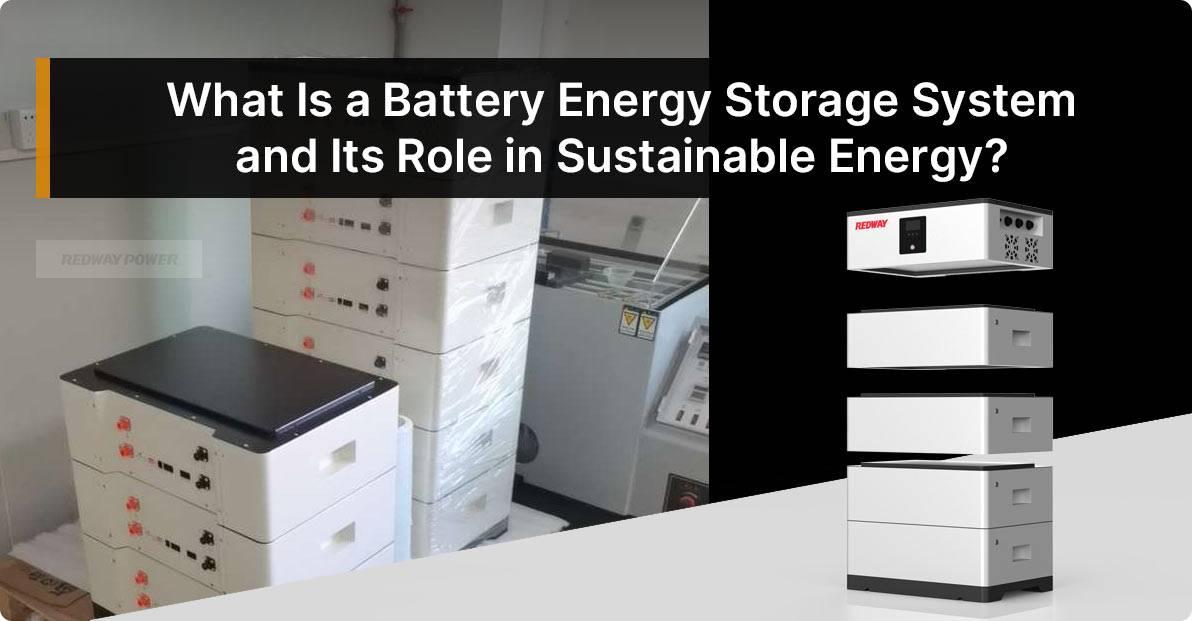
- Energy Storage: A BESS stores energy from renewable sources, such as solar and wind, for later use, ensuring the efficient utilization of clean energy.
- Release When Needed: The stored energy in a BESS can be released when demand is high or during periods when renewable energy generation is low, ensuring a reliable and continuous power supply.
- Balancing the Grid: BESSs help balance the grid by absorbing excess energy during times of low demand and releasing it during peak periods, reducing the need for fossil fuel-based power generation.
A Battery Energy Storage System (BESS) is a crucial component in sustainable energy practices. By storing and releasing energy from renewable sources, BESSs ensure the efficient utilization of clean energy, reduce reliance on fossil fuels, and help balance the grid, contributing to a more sustainable and environmentally-friendly energy system.
How Do Energy Storage Manufacturers Are Advancing Renewable Energy Integration?
Energy storage manufacturers are driving the advancement of renewable energy integration by developing innovative storage technologies and solutions. Their efforts aim to effectively capture, store, and release energy from renewable sources. Manufacturers also focus on enhancing the efficiency, scalability, and affordability of energy storage systems to facilitate the seamless integration of renewable energy into the grid.
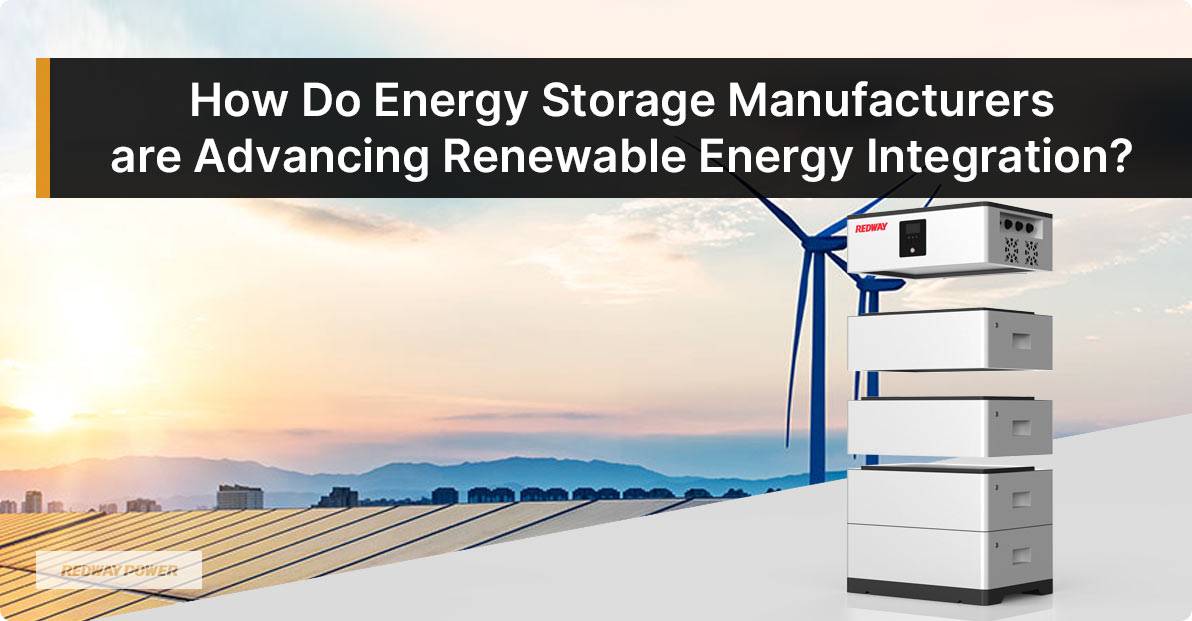
- Innovative Technologies: Manufacturers are developing storage technologies and solutions to effectively capture, store, and release energy from renewable sources.
- Efficiency and Scalability: Focus is placed on improving the efficiency, scalability, and affordability of energy storage systems to facilitate seamless integration with renewable energy.
- Seamless Grid Integration: Manufacturers’ efforts support the seamless integration of renewable energy into the grid, ensuring a sustainable and reliable energy future.
Energy storage manufacturers drive the advancement of renewable energy integration through innovative technologies, improved efficiency, and seamless grid integration. Their contributions play a crucial role in enabling the effective utilization of renewable energy sources and fostering a sustainable and resilient energy system.
What Are the Key Factors in Comparing Energy Storage Systems?
Key factors in comparing energy storage systems include cost, efficiency, capacity, durability, and environmental impact. To compare different systems, metrics like round-trip efficiency, levelized cost of storage, energy density, and life cycle assessment are used.
- Factors to Consider: Key factors in comparing energy storage systems include cost, efficiency, capacity, durability, and environmental impact.
- Metrics for Comparison: To effectively compare different systems, specific metrics like round-trip efficiency, levelized cost of storage, energy density, and life cycle assessment are utilized.
Comparing energy storage systems involves considering factors such as cost, efficiency, capacity, durability, and environmental impact. Metrics like round-trip efficiency, levelized cost of storage, energy density, and life cycle assessment further aid in evaluating and comparing different energy storage options. By taking these factors into account, informed decisions can be made to select the most suitable energy storage system for specific needs and requirements.
How Do Energy Storage Systems Optimize PV Systems for Maximum Efficiency?
Energy storage systems optimize PV systems for maximum efficiency by capturing and utilizing energy that may be lost or clipped by solar PV systems. They capture excess energy during periods of high DC-to-AC ratio, low voltage, and low power, as well as energy lost in the morning, late afternoon, or due to cloud cover. By storing and utilizing this energy, energy storage systems enhance the overall efficiency and performance of PV systems.
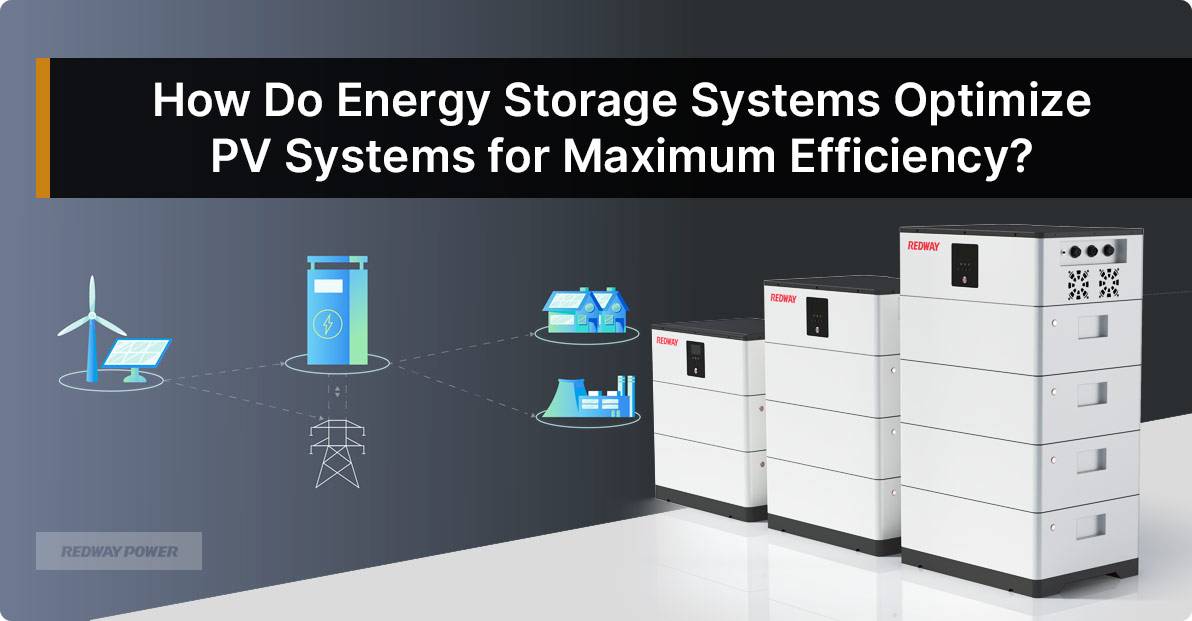
- Energy Capture: Energy storage systems capture excess energy that may be lost or clipped by solar PV systems during periods of high DC-to-AC ratio, low voltage, and low power.
- Energy Utilization: By storing this captured energy, energy storage systems ensure that it is utilized efficiently, enhancing the overall performance of PV systems.
- Loss Mitigation: Energy storage systems help mitigate energy losses in the morning, late afternoon, or due to cloud cover, ensuring maximum utilization of solar energy.
Energy storage systems optimize PV systems for maximum efficiency by capturing and utilizing energy that may be lost or clipped by solar PV systems. By capturing and storing excess energy and mitigating energy losses, energy storage systems enhance the overall efficiency and performance of PV systems, contributing to a more sustainable and reliable energy infrastructure.
What Are the Different Types of Energy Storage System Batteries?
The different types of batteries used in energy storage systems include lithium-ion, flow, lead-acid, sodium, and others. These batteries are designed to meet specific power and duration requirements, enabling efficient energy storage and utilization.
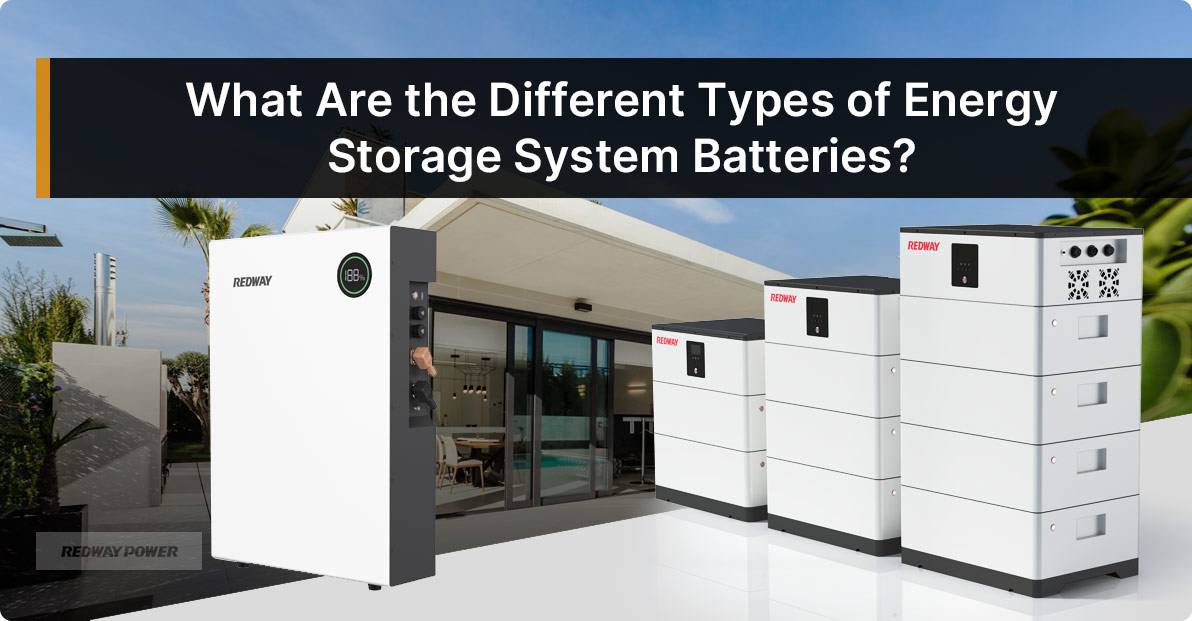
- Lithium-Ion: Lithium-ion batteries are widely used in energy storage systems due to their high energy density and long cycle life.
- Flow Batteries: Flow batteries provide long-lasting, rechargeable energy storage, particularly for grid reliability.
- Lead-Acid: Lead-acid batteries are a mature and cost-effective technology used in various energy storage applications.
- Sodium Batteries: Sodium batteries offer a promising alternative to lithium-ion batteries, providing potential advantages in terms of cost and material availability.
Energy storage systems employ a range of battery types, including lithium-ion, flow, lead-acid, sodium, and others. Each type has its own advantages and suitability for specific power and duration requirements. By utilizing different battery technologies, energy storage systems enable efficient energy storage and utilization, contributing to a more sustainable and reliable energy infrastructure.
What Are the Economic and Environmental Benefits of Solar Energy Storage Systems?
Solar energy storage systems offer economic and environmental benefits. They replace fossil fuel-based power generation, reducing harmful emissions and combating climate change. Solar energy is clean and renewable, promoting sustainability. These systems can also lead to reduced energy bills, energy independence, and a reliable power supply.
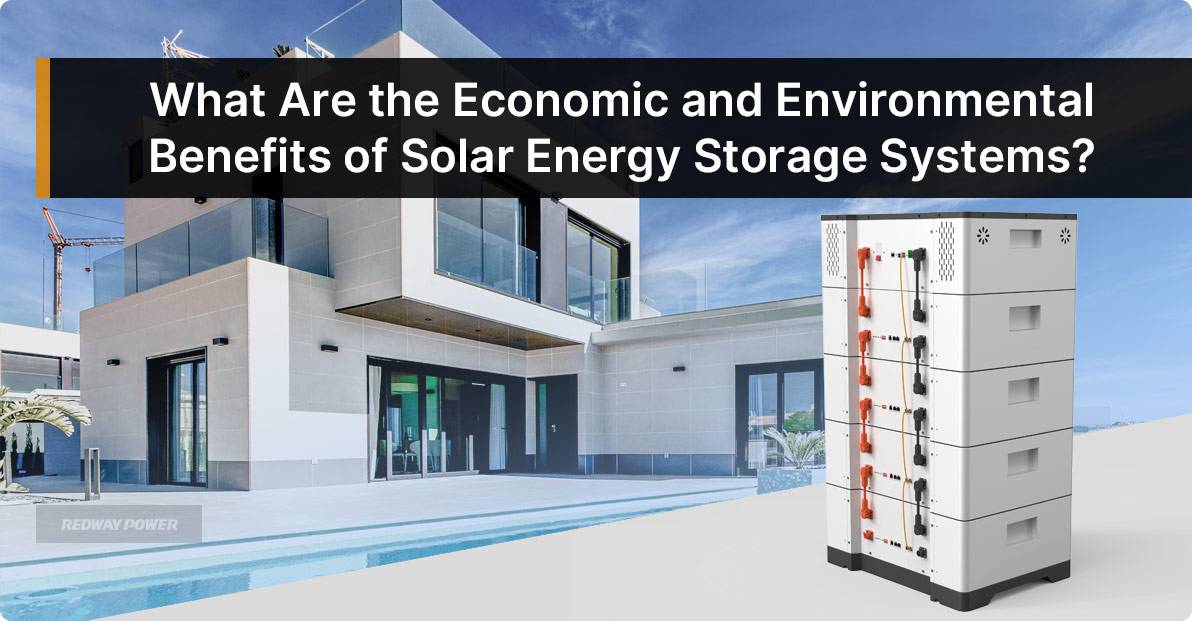
- Environmental Benefits: Solar energy storage systems replace fossil fuel-based power generation, reducing harmful emissions and combating climate change. Solar energy is clean, renewable, and contributes to a sustainable energy future.
- Economic Benefits: Solar energy storage systems can lead to reduced energy bills, providing cost savings for homeowners and businesses. They also offer energy independence and a reliable power supply, enhancing resilience and reducing dependence on the grid.
Solar energy storage systems offer a range of economic and environmental benefits. By replacing fossil fuel-based power generation, they reduce harmful emissions and contribute to a cleaner and more sustainable energy landscape. Additionally, these systems provide economic advantages, including reduced energy bills and increased energy independence, promoting a more resilient and cost-effective energy future.
What Are the Top Lithium Battery Energy Storage System Manufacturers?
Some of the top lithium battery energy storage system manufacturers include BLJ Solar, Tesla, BYD, Samsung SDI, Siemens Energy, LG Energy Solution, and others. These manufacturers are recognized for their expertise in producing high-quality lithium battery energy storage systems.
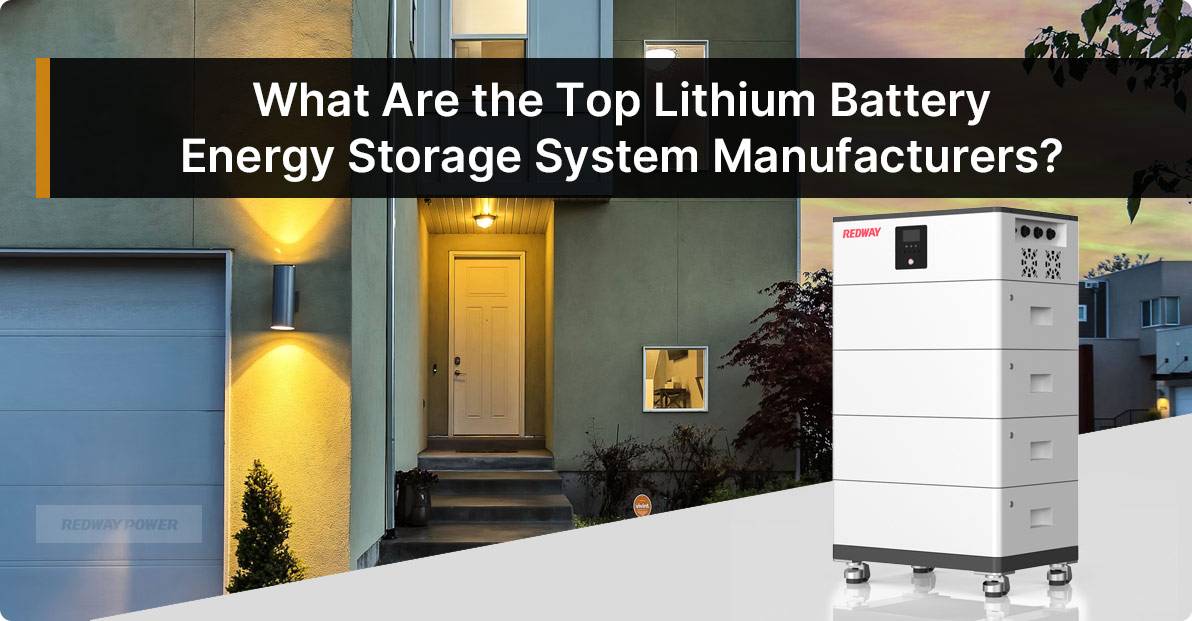
- BLJ Solar: Known for its expertise in producing high-quality lithium battery energy storage systems.
- Tesla: Renowned for its advanced lithium battery technology and innovative energy storage solutions.
- BYD: A major player in the industry, offering reliable and efficient lithium battery energy storage systems.
- Samsung SDI: Recognized for its high-performance lithium battery solutions for various applications.
- Siemens Energy: A reputable manufacturer providing reliable lithium battery energy storage systems.
- LG Energy Solution: Known for its advanced lithium battery technology and commitment to sustainable energy solutions.
Top lithium battery energy storage system manufacturers include BLJ Solar, Tesla, BYD, Samsung SDI, Siemens Energy, LG Energy Solution, and others. These manufacturers are at the forefront of the industry, offering high-quality and innovative lithium battery energy storage systems for various applications. Their expertise and commitment to sustainable energy solutions contribute to the advancement of the energy storage industry.
How Are Energy Storage Systems in California Contributing to the State’s Clean Energy Goals?
Energy storage systems in California contribute to the state’s clean energy goals by maintaining a clean and reliable power grid. These systems store excess energy from renewable sources like solar during the day and release it when solar generation decreases in the evening hours. By integrating energy storage, California enhances the utilization of renewable energy, reduces reliance on fossil fuels, and moves closer to achieving its clean energy objectives.

- Maintaining a Clean and Reliable Grid: Energy storage systems store excess energy from renewable sources like solar during the day, ensuring a continuous power supply even when solar generation decreases in the evening.
- Enhanced Utilization of Renewable Energy: By storing and releasing energy as needed, energy storage systems support the increased utilization of renewable energy, reducing reliance on fossil fuel-based power generation.
- Integration and Resilience: The integration of energy storage systems improves the resilience of the power grid, enabling a smooth transition towards cleaner and more sustainable energy sources.
Energy storage systems in California contribute significantly to the state’s clean energy goals by maintaining a clean and reliable power grid. By storing and releasing energy from renewable sources, these systems enhance the utilization of clean energy and reduce reliance on fossil fuels. The integration of energy storage systems supports a smoother transition towards a more sustainable and resilient energy future for California.
Inquiry Now

